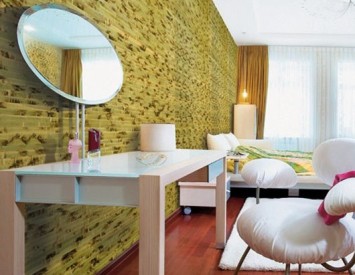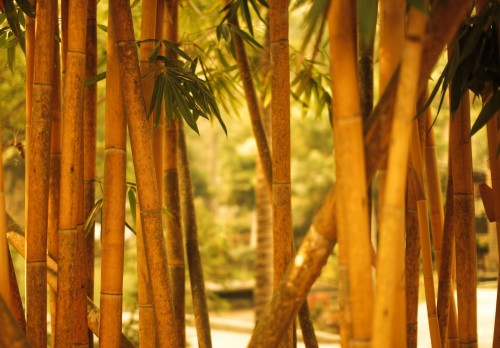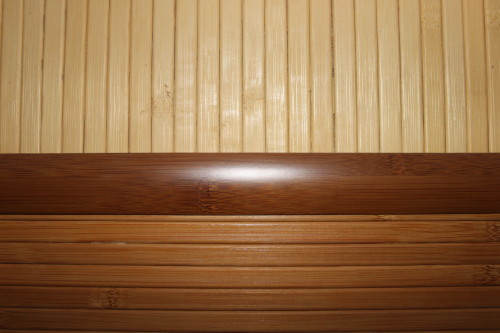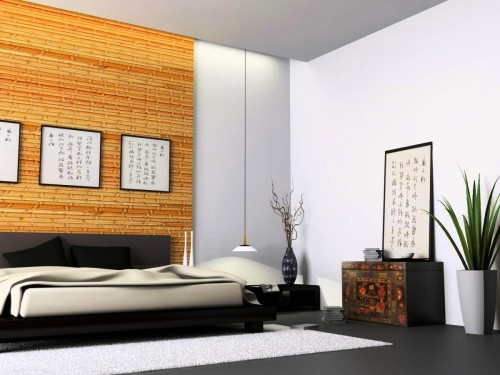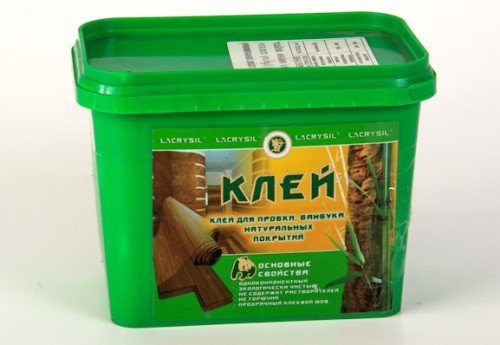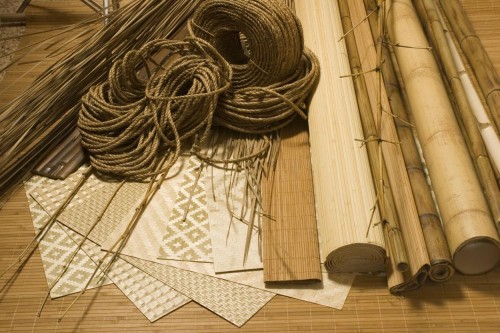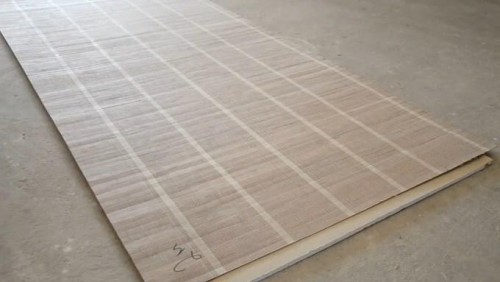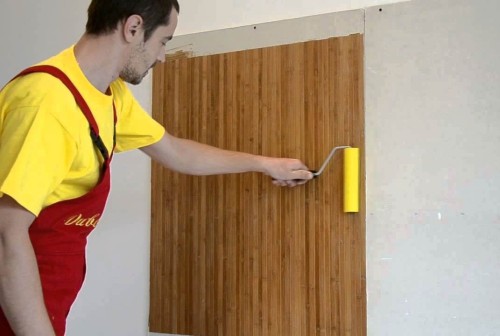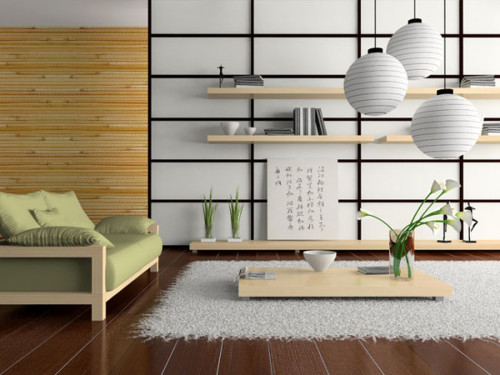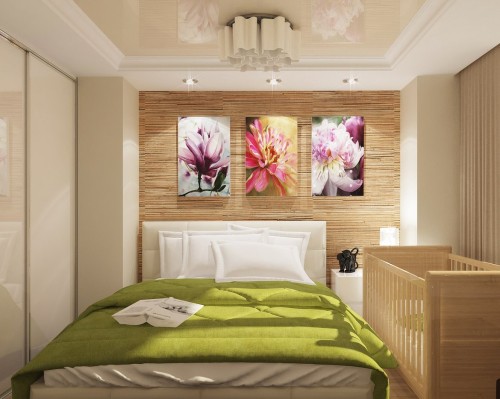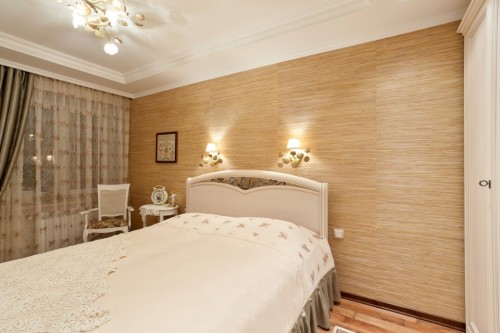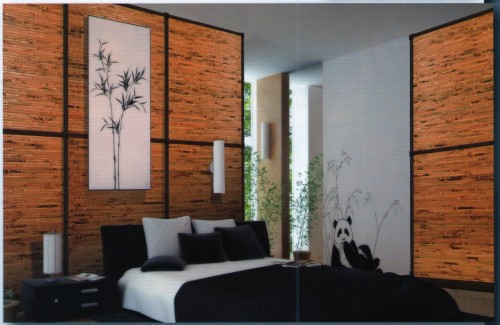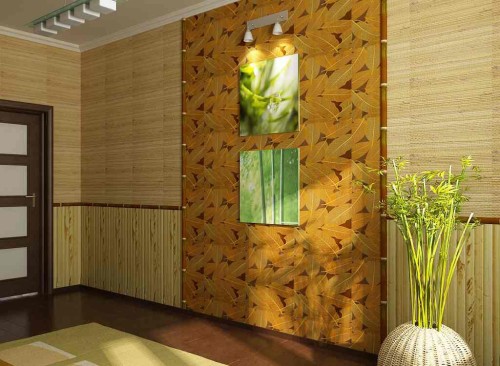If you are going to make repairs in the room, you should first plan the interior design, including deciding what wallpaper you want to glue on the walls. To decorate the room in various styles, you can use natural finishing material, which looks very spectacular - bamboo wallpaper. This finish will revive the interior and decorate it, and any type of furniture will look quite organic against its background. Thanks to such properties, bamboo wallpaper has now gained quite wide popularity.
Content
What are bamboo wallpaper
The use of bamboo wallpaper in the interior is especially relevant for lovers of natural and environmentally friendly materials, because they are made of freshly cut bamboo stems by splitting and further drying through special technology without the use of any auxiliary substances harmful to the health.
Bamboo grows in many countries and depending on the place of cultivation, as well as varieties differs in color. It can vary from snow-white and milky white, golden yellow to greenish-filled and various shades of reddish-brown. Such colors of the paintings provide quite wide capabilities for combining. You can buy bamboo wallpapers with epaulettes, as well as in the form of rolls. This finishing material is recommended to be purchased with a small margin.
In the original state, the bamboo contains about 80% moisture, after drying it remains about a tenth of the initial mass. In order to prevent the appearance of cracking, the initial drying is carried out in special rooms with a special mode of temperature and humidity (usually about 45%), and then the stems in storage rooms are left until finally drying out. After that, sections up to 17 mm long, carefully removed from the upper layer of the material prepared in this way, are glued on the basis of fabric or rice paper, and, if necessary, stitched with decorative nylon or ordinary thread. For the manufacture of wallpapers, special varieties of bamboo are used, characterized by resistance to coloring, while the stems of similar shades are selected for the manufacture of wallpaper canvases so as not to use staining. Manufacturers can process such products with antistatic to give them the properties of dust repulsion.
Bamboo wallpapers are universal and harmoniously fit into any environment. Such a decoration looks very exotic and spectacular on the walls, giving the room a kind of natural flavor. Designers are happy to use bamboo wallpaper, decorating the interior design in ethnic oriental style, as well as in natural, minimalism or safari style. Thanks to the dusting properties, environmental friendliness, as well as wear resistance, this finishing material can be used for finishing the kitchen, the hallway, as well as the children's room. At the same time, staining will not be needed, although if you wish, you can cover bamboo wallpaper with a thin layer of varnish.
The advantages and disadvantages of this finishing material
There are several options for how to glue bamboo wallpaper. For example, you can completely finish the walls with them - it should be noted that such a plain finish may look a little boring. A combination of several tones of bamboo wallpaper looks more expressive on the walls. In addition, this material can be used to finish individual sections of the walls - for example, in the form of panels. It is also worth considering that bamboo and cork wallpapers are perfectly combined in the interior decoration. Pouring part of the wall with bamboo wallpaper, you can create a decorative panel on it with your own hands, placed in a decorative frame. With the help of bamboo wallpaper, it is easy to zone the room, focusing on its individual elements - for this it will be necessary to highlight the available columns and arch, as well as emphasize the niches.
Among the advantages of using bamboo wallpaper, the following can be mentioned:
- their completely natural composition;
- high heat and soundproofing properties;
- the fact that this finishing material is distinguished by antistatic properties does not absorb dust and dirt, as well as smells;
- resistance to small drops of water;
- the strength and durability of such a finish.
Bamboo wallpapers do not need special care to clean from dust, it will be enough to wipe them with a damp cloth.
The disadvantages of this type of finishing material include some moodiness during processing, as well as a fairly high price of bamboo wallpaper, which depends on the quality of the material, variety and method of processing bamboo. In addition, it is worth considering that bamboo wallpaper is quite capricious when gluing, they cannot be wetted with water, and also treated with a hard brush. Due to its composition from natural wood fibers, this material does not always have a perfectly smooth and even structure, small seals and irregularities are sometimes observed on its surface. In addition, the joints of bamboo wallpaper are clearly visible on the walls.
How to choose glue for bamboo wallpaper
It is very important to choose the right glue for bamboo wallpaper. This finishing material is quite dense and heavy, so the usual water -based wallpaper glue (like PVA) is not suitable for them. For gluing bamboo wallpaper, a special glue should be used, which is recommended by the manufacturer of this finishing material, or you will need to choose the appropriate adhesive composition of the contact action based on vinyl or acrylic. It is not difficult to determine the right amount of glue - for applying to the wall and wallpaper at the rate of 1m 2 the processed surface will require it about 400 g. Thus, it will not be difficult to calculate the required amount of adhesive composition for a specific area.
For reliable fixation of bamboo wallpaper, especially on wooden and brick walls, as well as drywall sheets, liquid nails can also be used (it should be taken into account that the color will need to be selected in the tone of the main finishing material) and decorative cloves for wallpaper. In addition, so that the canvases of such a finish lay down exactly on the walls, you will need to pay attention to the quality preliminary preparation of the walls.
How to glue bamboo wallpaper
For decoration, this material is suitable for a concrete or brick base, plastic, wood and other surfaces on which minor irregularities are allowed, since bamboo will easily cover them.
Surface preparation
In the presence of significant protrusions or recesses, bamboo wallpaper, which is a fairly hard material, is not properly fixed on the walls, so it is necessary to prepare them first. To do this, their surface must be cleaned of the remains of the old finish in the form of paint or wallpaper, as well as from exfoliating plaster - it is convenient to do this with a hard grater. To clean the treated surface from dust, fat spots and soot, it must be washed. In addition, in the presence of irregularities, it will be necessary to thorough the walls by aligning their surface - while close attention should be paid to the corners. After the putty dries, you need to apply a primer fluid, and then, having waited for the walls to dry, it is necessary to mark them.
Stages of work
Only completely dry walls can be glued with bamboo wallpaper, otherwise there is a possibility of sliding with glue of heavy canvases along raw plaster or their discharge from the walls.
To perform work on gluing bamboo wallpaper, wallpaper glue, as well as a plastic spatula or a hard rubber roller, as well as a soft brush with nylon bristles, will be needed.
A few hours before the start of the walls of the walls, the rolls of the wallpaper should be expanded, put them on a flat horizontal surface and leave in this position for several hours.
To stick the wallpaper, you will need to perform the following sequence of actions:
- before gluing, you need to cut the wallpaper. To cut the paintings along the roll, you need to use a sharp knife, trying to act as accurately as possible. Cut bamboo wallpaper across it will be somewhat more difficult - for this you can use an electrician or a hacksaw for metal. It is important to note that the wallpaper canvases should not be folded, otherwise the resulting folds and bruises are subsequently unlikely to be defeated;
- when using a special vinyl glue, it must be applied by a brush on the processed surface of the walls, as well as on the back of the wallpaper (and along the edges of the canvas should be smeared more intensively) and left for absorption-for this it may be necessary for 5-10 minutes. The adhesive should be completely absorbed, the remaining excesses should be carefully blown up with a dry pure twin (do not rub);
- next, the wallpaper canvas must be applied to the wall and carefully pressed, gradually leaving it with a plastic spatula, if necessary, eliminating the formed air bubbles. Do not move the glued canvas along the wall, try to place it the first time the first time, otherwise you can damage the bamboo;
- the excess glue that appeared on the front side should be carefully removed from the wallpaper using a soft rag;
- if necessary, the edges of the wallpaper should be carefully trimmed with a sharp knife.
It is worth noting that the gluing of bamboo wallpaper should be as accurately as possible so as not to mole their canvases, since after such an effect this material will not return to its original state, in addition, bamboo plates can break. Pashing the wallpaper should be carried out strictly the joint in the joint, including at the corners. It is important to note that the corners should not be wrapped with bamboo wallpaper, in such places the canvas should be carefully trimmed with, and then disguise the joints of the corner joints using special connecting rails or decorative moldings of suitable coloring - they are attached to the same glue and additionally fixed with the help of wallpaper cloves.
It is worth considering that it is not recommended to glue such wallpapers in the places where direct sunlight hit, since under their action there is a burnout of bamboo - similarly to many natural materials, it can lose the brightness of coloring and change its shade. You should not allow moisture from bamboo wallpaper, as it can provoke the divergence of joints and detachment of wallpaper from the wall. Bamboo wallpaper does not require complicated care, it is enough to periodically wipe them with a damp cloth napkin or a sponge from dust, in addition, they can be vacuumed.
